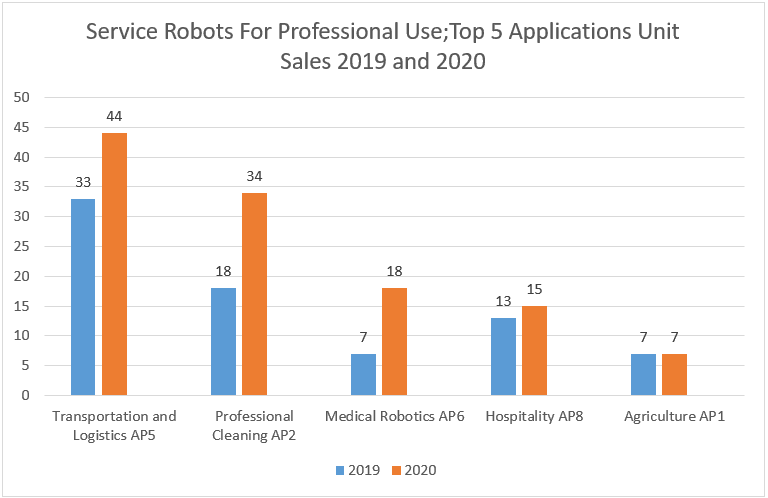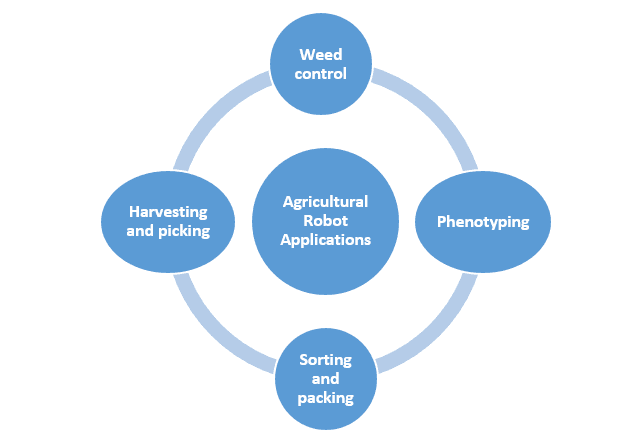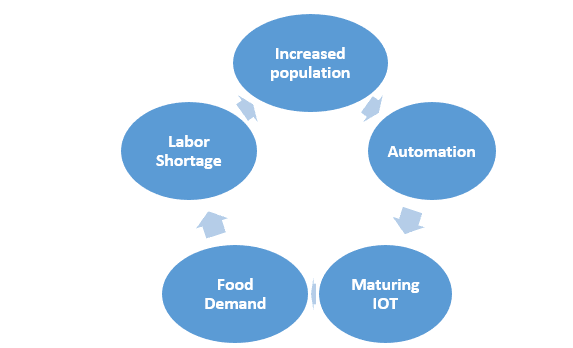Efficiency and Innovation in Farming: Exploring the World of Agricultural Robotics
Overview
The use of robotics applications in the machinery design and task execution has resulted in an increase in research and investment in the application of agricultural machinery in precision agriculture. Operating, directing, and controlling autonomous machines to perform agricultural tasks is known as precision autonomous farming. It spurs interest in agricultural robotics. Autonomous vehicles are anticipated to play a central role in all applications for precision agriculture in the near future.
Automation and robotics have a big potential to help society meet its agricultural production needs in 2050. For the past 60 years, robots have been essential to boosting productivity and lowering costs in industrial production and goods. A similar trend has emerged in agriculture over the past 20 years, and self-guiding tractors and harvesters based on GPS and vision are already on the market. Farmers have more recently begun to test autonomous systems that automate or improve processes like pruning, thinning, and harvesting, as well as mowing, spraying, and weed control.

In 2020, the global market for professional service robots generated 6.7 billion US dollars in revenue (sample method), an increase of 12% from previous year. The sale of new consumer service robots increased at the same time by 16% to 4.4 billion dollars. This is stated in the International Federation of Robotics’ World Robotics 2021 – Service Robots report (IFR).
Applications of Agricultural Robots

Automation of these applications can be challenging, though. For instance, a robotic system meant to pick sweet peppers runs into many difficulties. Under difficult circumstances, including dust, varying light intensity, temperature changes, and movement brought on by the wind, vision systems must locate and assess the pepper’s ripeness. But picking a pepper still requires more than just cutting-edge vision technology. To carefully grasp and place a pepper, a robotic arm must move through environments with a similar number of hazards. When compared to picking and placing metal parts on an assembly line, this process is very different. The agricultural robotic arm needs to be accurate enough to avoid damaging the peppers while picking them and flexible enough to operate in a dynamic environment.
Market Drivers and Agriculture Robotics Restraints

Due to the dwindling interest in farming and the growing number of older farmers, the labour force in agriculture has decreased in recent years. Farmers are under pressure to maintain production in response to the rising demand for fresh produce as the population of farm labourers continues to decline. Furthermore, the trend toward less employment is resulting in higher labour wages.
As a result of the labour shortage, stakeholders are considering how to modernise the farms. For instance, according to a report by the American Farm Bureau Federation (AFBF), 56% of US farms are now using agritech, with a labour shortage cited by more than half of those who use it. Wireless sensors, robotics, predictive forecasting models, and data analytics are some of the cutting-edge agrotech applications. As a result, rising wages and labour shortages are fueling market expansion.
Conclusion
Various agricultural robots are enhancing farming practises and addressing particular issues that will benefit farmers (e.g., saving time, labour, money, and products). Around the world, numerous researchers, engineers, and start-up businesses are working to advance current technology and create brand-new, cutting-edge robots for even more agricultural uses.
Author: Divyansh Tiwari
